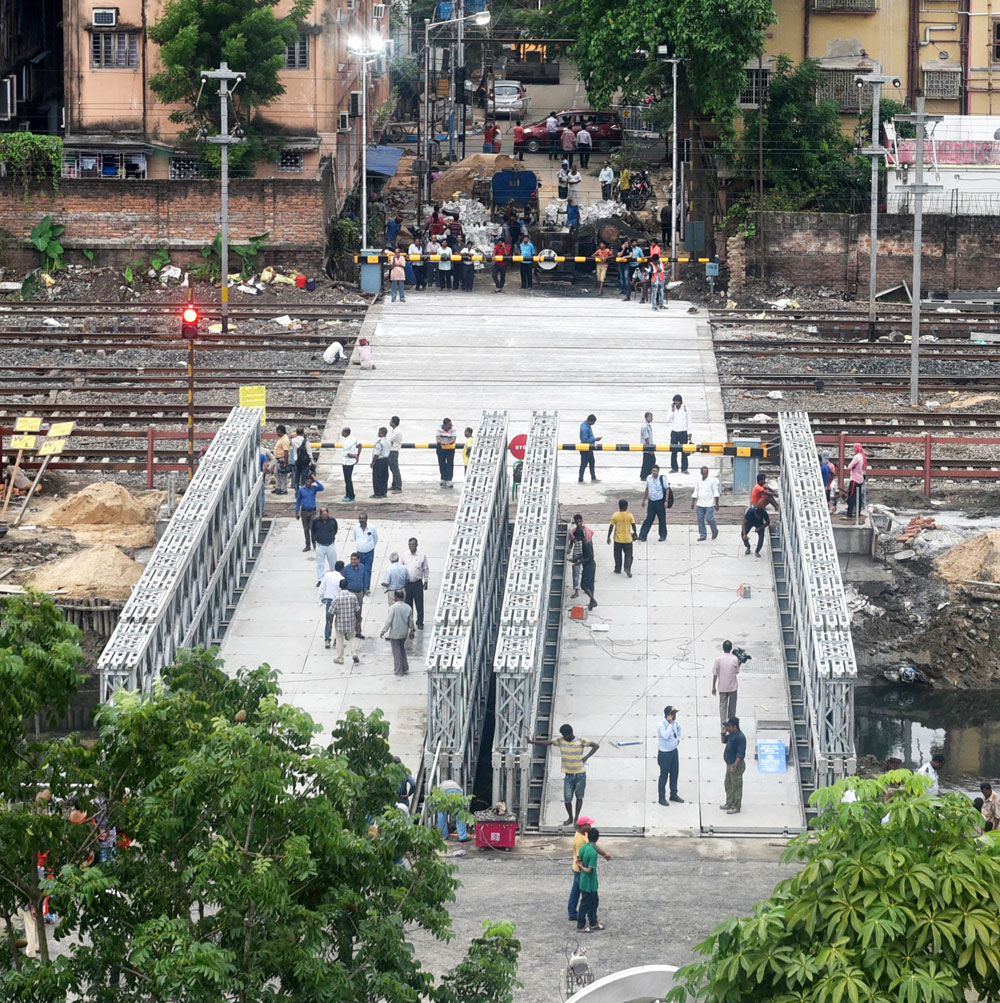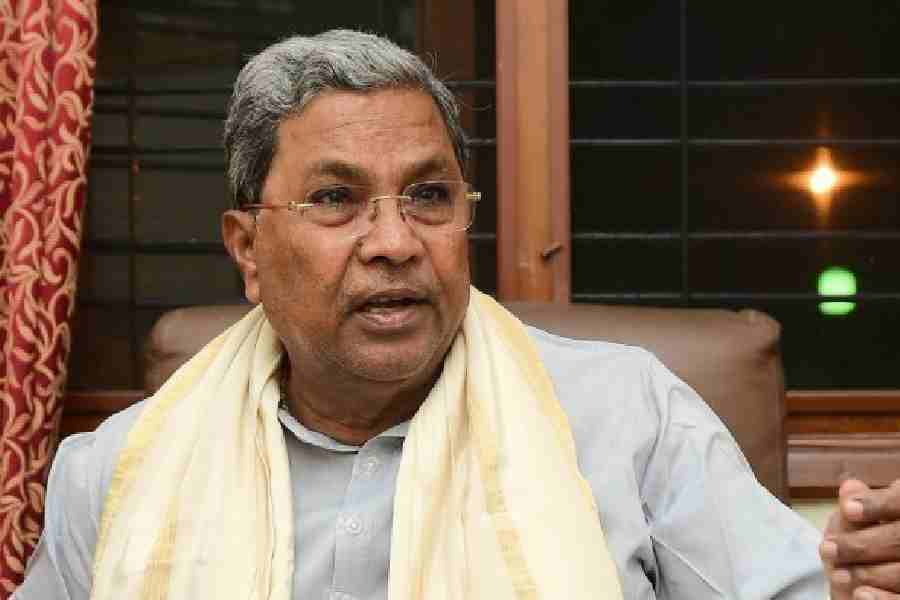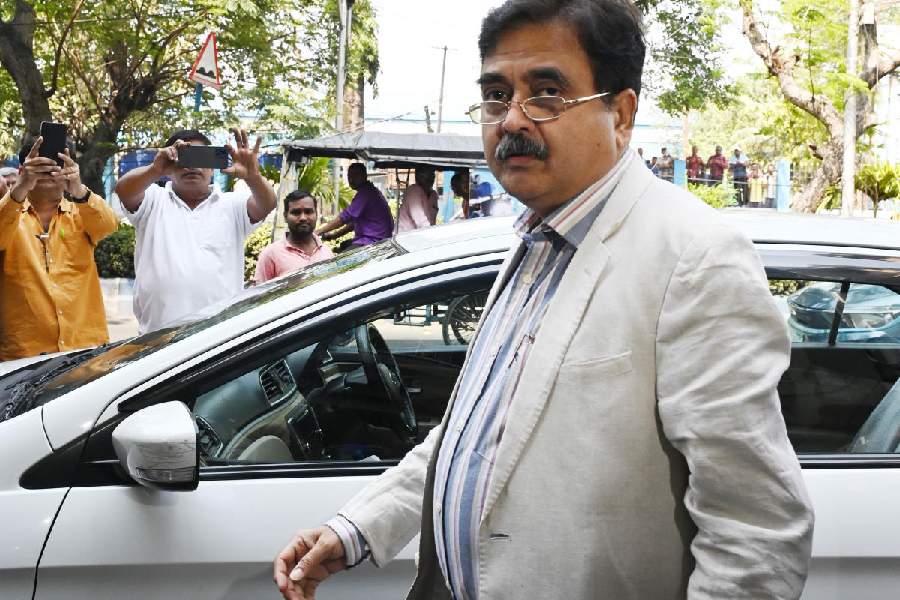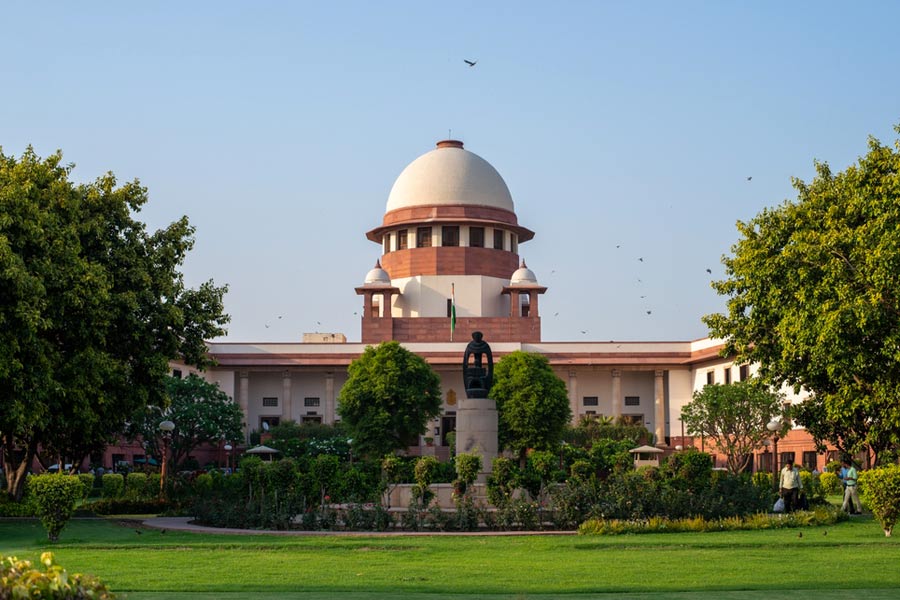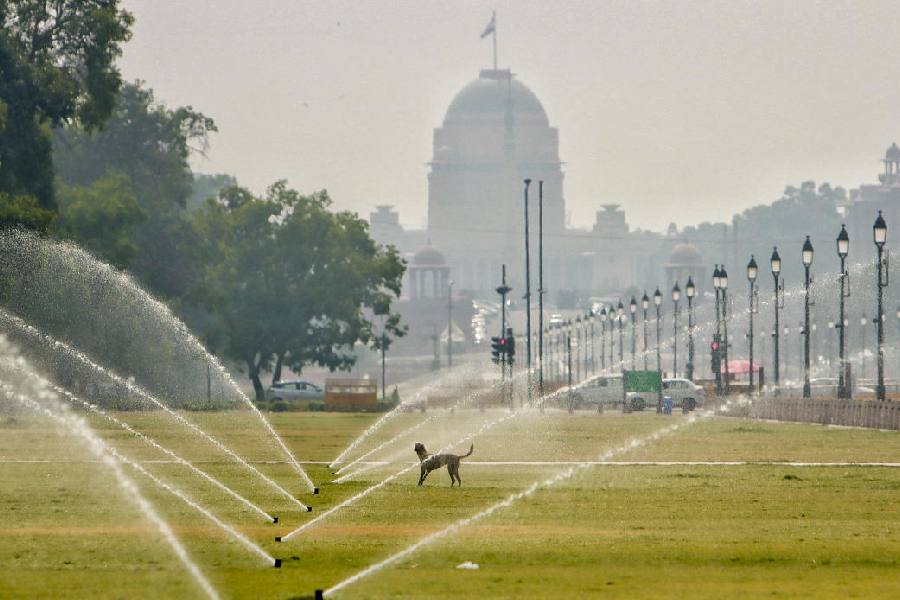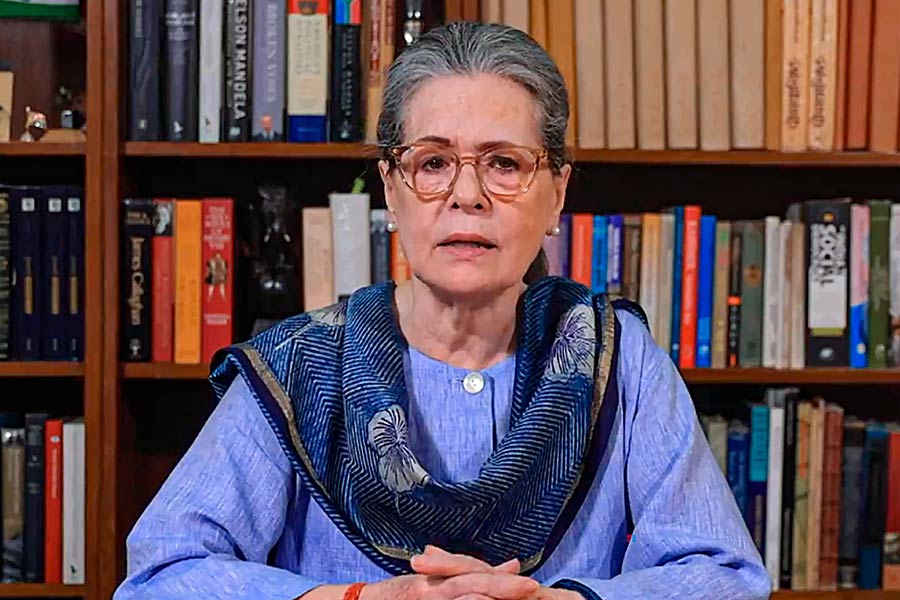The fate of the new bridge in Majerhat and the Joka-Esplanade Metro hangs on the pillars of the railway project standing adjacent to the collapsed bridge.
The bridge the state government is planning to build in Majerhat could be wider than the one that had collapsed on September 4. Keeping that in mind, the state has asked Metro Railway not to extend construction beyond the pillars that have come up for the Majerhat station.
The government has specified in the tender floated for the bridge that it has to be opened to traffic in nine months.
The new condition has put the railways in a quandary.
In the blueprint for the Joka-Esplanade Metro that the government has approved, the construction was to extend 2.5m to the east of the pillars.
The public works department has recently written to the Rail Vikas Nigam Ltd (RVNL), the implementing agency of the Metro project, to ensure that the structure was restricted till the pillars on the eastern side.
Railway sources said passenger entry/exit points with escalators and elevators would be built on these pillars.
“It’s not possible to build a structure which will not protrude from the pillars. We will discuss the matter with the state government. If the issue is not resolved, the future of the project will become uncertain,” a railway official said on Friday.
Sources in the PWD’s roads division, which is designing the new bridge in Majerhat, said the government was keen on putting in place either a “cable-stayed” bridge or a “bow-stringed” bridge — the earlier one was “pre-stressed” — and wanted to keep adequate free space for the contractor to execute the project.

PWD engineers said the government was more inclined towards setting up a cable-stayed structure — like Vidyasagar Setu — because of two reasons.
First, the number of pillars of a cable-stayed bridge will be less than that of a “bow-stringed” bridge. Secondly, a “cable-stayed” bridge is aesthetically more appealing than any other bridge.
“The distance between the Metro pillars and the collapsed deck-slab is about six feet, which is just enough to mount the cables that will hold a cable-stayed structure. If the Metro structure extends further to the east, there will be no room for the cables,” said an engineer in the design cell of the PWD.
“If there is not enough space for building a cable-stayed bridge, no company will bid for the project. We want to ensure that space does not come in the way of the project.”
A railway official said it was not possible to change the design of the Joka-Esplanade Metro link because the construction of Majerhat station has started.
The station is coming up just beside the collapsed bridge.
The construction of the proposed Metro station stopped the moment the bridge had collapsed. Three days later, the police had formally asked RVNL to suspend work till further orders.
Chief minister Mamata Banerjee had called for a forensic investigation to find out whether vibrations caused by Metro work had weakened the bridge and led to its collapse. On September 18, the chief minister had announced that the Metro project would be allowed to resume.

